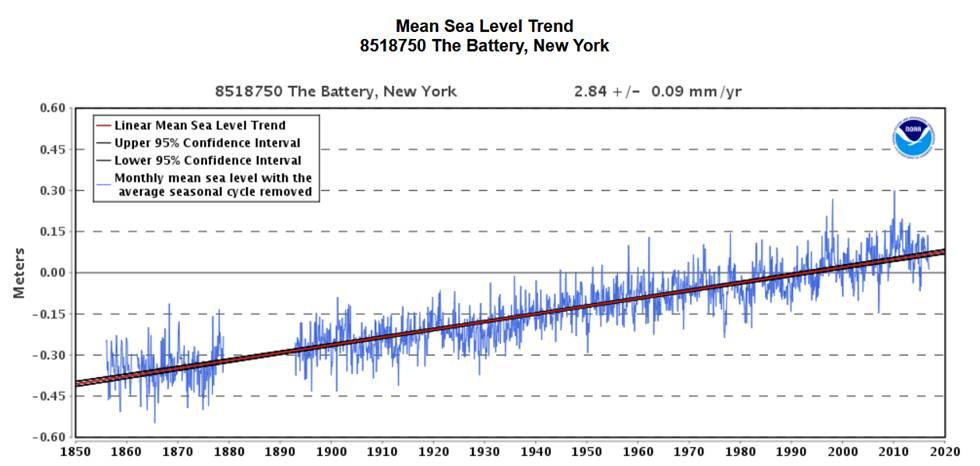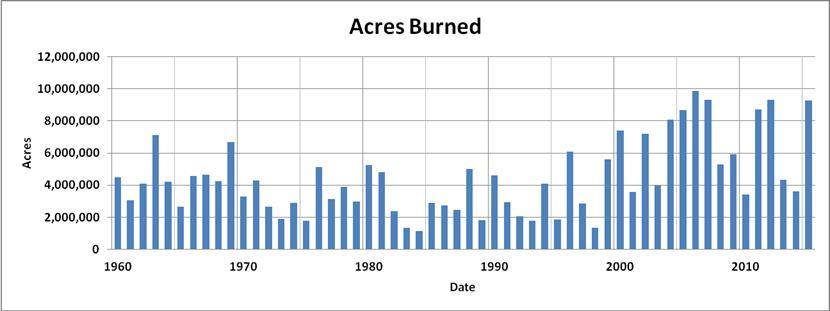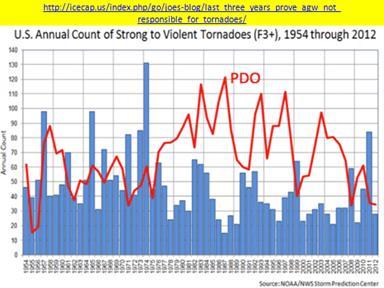The last three minutes of the program were the most egregious. This was the segment suggesting that the notion of catastrophic, human-caused, CO2-fueled global warming was not broadcast enough or with enough fervor. Therefore, there should be more – both in broadcasts, and in a to-be-developed application on smart phones – which would drum in the below “truths” to listeners:
Fires, presumably wildfires and forest fires, are human-caused, from our use of fossil fuels
Tornadoes are caused by humans using fossil fuels
Hurricanes are caused by our use of fossil fuels
Droughts are caused by human use of fossil fuels.
Not in the last three minutes but an earlier passage, perhaps 35 minutes into the presentation, said that “rising tides,” (presumable any rise or acceleration in rise of sea level) was caused by human use of fossil fuels.
There was absolutely not a single fact, measurement, observation or data element quoted to support these global warming assertions. Indeed, there could have not been, because there are no facts to support such assertions.
The purpose of this post is to present a balanced view which provides evidence to the contrary of CLIMATE ONE’s assertions.
My career was as a meteorologist, but I was also educated as a geologist, so Earth Science is my forte; highlights of my career are appended at the bottom of this post.
Below, using Facts, Measurements, Observations and Data, I show that any human influence on global warming is so vanishingly small as to be unmeasurable.
Here are the data, and my references, to back up my statements:
Fire data
Fire data are collected and available at the National Interagency Fire Center in Boise, Idaho.
This plot shows the numbers of fires for each year in the NIFC data base, available from the NIFC web page.
The late 20th century minimum of acres burned represents the wet years associated with the Pacific Decadal Oscillation “Warm” phase, the post-2000 increase represents the return to PDO “Cold” phase.
I downloaded the data from the NIFC web site and plotted them in Excel, a skill seemingly unknown to CLIMATE ONE.
Tornadoes
The strength of the pole to equator temperature difference determines the atmospheric baroclinicity. Baroclinicity is a measure of the storminess of the atmosphere. Note in the plot below, the peak in the tornado activity associated with the great Xenia, Ohio tornado outbreak of 1974. This is the period when TIME, NEWSWEEK, and the New York Times were describing the global cooling, which had been occurring since 1940. Global Cooling results in stronger equator to pole temperature differences, stronger baroclinicity, storm systems, and convective outbreaks, including tornadoes.
The Pacific Decadal Oscillation was discovered in the late 1990s. It describes a change in the temperature distribution in the Pacific Ocean, the world’s largest ocean, which affects the world’s weather patterns.
When the atmosphere went into PDO-Warm, baroclinicity decreased, and the strength of the tornadoes and their numbers decreased. As the PDO cycle went Cold, baroclinicity increased, and more strong to severe tornadoes occurred.
The chart below shows the number of strong to violent tornadoes for each year from 1954 to 2012 as blue bars. An index of the strength of the Pacific Decadal Oscillation is plotted in Red. It is obvious from the chart that the Pacific Decadal Oscillation exerts a strong control on strong to severe tornado formation.
The nearly monotonic increase in the concentration of carbon dioxide has no effect.
Hurricanes
Hurricanes and tropical storm intensities and numbers are tabulated each day of the year, and their total Accumulated Cyclone Energy is plotted by Ryan Maue, now of Weatherbell, but formerly of Florida State University.
Drought
A commonly used measure of drought is the Palmer Drought Severity Index, or PDSI.
The National Climatic Data Center’s “Climate at a Glance” page allows users to calculate and display climate data on-line.
The data for the PDSI since recordkeeping in the USA became available for such calculations are available here:
Clicking on the above link will allow you to generate, plot and view the data directly at the NCDC site: the yellow-orange bars describe the Palmer Drought Severity Index
Please notice these features, some of which I have previously described:
The 1930s drought, the Dust Bowl Years, show the maximum drought. You can see the 1950s drought which hit New Mexico and Texas especially hard. The green bars show excess rainfall in the PDO warm period at the end of the 20th century. As we have been entering PDO Cold more drought appears, but it is not as strong as the 1950s or the Dust Bowl Years.
Sea Level
Seas were higher than today in the Roman and Medieval Warm periods as described in my blog post, History Falsifies Climate Alarmist Sea Level Claims.
Sea levels fell during the Little Ice Age, and have started rising, but as seen in the above post, have not reached the heights in the not too distant historic past.
Dave Burton has a Sea Level Page here.
NOAA has a web page on sea level at their web page, Tides and Currents.
This is an interactive map where you click on a station and view the sea level trend. Among the longest tide gage records is from the San Francisco station.
Also, the Battery, New York City, has a long tide gage record.

US tide gages show no acceleration of sea level since shortly before the US Civil War, when record keeping began.
These data plots falsify the notion espoused by CLIMATE ONE, that our use of fossil fuels has accelerated the rate of sea level rise.
Houston and Dean in the Journal of Coastal Research found no 20th century acceleration in the rate of sea level rise. This also falsifies the statement by the CLIMATE ONE broadcast on the Commonwealth Club on 11 and 12 March on KRWG. The Coastal Research link is still live.
As the Southern New Mexico affiliate of NPR, KRWG’s broadcasts almost never air material which run counter to the mythical “consensus of scientists” that human use of fossil fuels and the associated increase in atmospheric carbon dioxide is directly responsible for increases in temperature of the past decades. However, science is about facts, measurements, observations and data, not consensus.
The data I show here refutes the claims by CLIMATE ONE and their parent organization, the Commonwealth Club. Claims of the “Settled Science” of catastrophic warming are without foundation, if you look at the data.
In science, the debate is never over and the science is never settled.
The Author
Robert W. Endlich served as Weather Officer in the USAF for 21 Years. From 1984-1993 he provided toxic corridor and laser propagation support to the High Energy Laser Systems Test Facility at White Sands Missile Range. He has published in the technical literature and worked as software test engineer at New Mexico State University.
As a Basic Meteorology student at Texas A&M University, he was elected to Chi Epsilon Pi, the national Meteorology Honor Society. He also earned a bachelor’s degree in Geology from Rutgers University and a master’s in Meteorology from the Pennsylvania State University.
___________________________________________
Comments
-
-
-
-
Surely you realize that Mr Endlich’s graph selections are not definitive evidence that human influence on the climate is not a serious long-term threat to the planet as it exists today.
One example-
-
-






